- Home
- William Shakespeare
The Taming of the Shrew Page 2
The Taming of the Shrew Read online
Page 2
The purpose of theater is not usually to endorse or to dissent from a moral position or a sociological phenomenon. It is to show--comically, tragically, farcically, thoughtfully--how human beings interact with each other. Shakespeare's greatest resource is his language and what attracts him to Katherina as a character for realization on the stage is what attracts Petruchio to her: her lively language. How would his original audience have responded to that language? First and foremost, they would have enjoyed it and laughed with it. If they began to reflect upon it, they would have been pulled in contradictory directions. There may well have been an element perhaps of fear and loathing: "From the outset of Shakespeare's play, Katherine's threat to male authority is posed through language; it is perceived as such by others and is linked to a claim larger than shrewishness--witchcraft--through the constant allusions to Katherine's kinship with the devil."6 But equally, among the more sophisticated, there could have been a relish in the subversion of norms. Translating this into the language of modern feminist criticism,
Kate's self-consciousness about the power of language, her punning and irony, and her techniques of linguistic masquerade, are strategies of italics.... Instead of figuring an essentialized woman's speech, they deform language by subverting it, that is, by turning it inside out so that metaphors, puns, and other forms of wordplay manifest their veiled equivalences: the meaning of woman as treasure, of wooing as a civilized and acceptable disguise for sexual exploitation, of the objectification and exchange of women.7
Mastery of language was an extremely important idea in Shakespeare's time. The pedagogy of Renaissance humanism was fundamentally concerned with the cultivation of the powers of speech and argument as the means of realizing our potential as rational beings. Within the play, Petruchio's subduing and refinement of Kate operates in parallel to the purported efforts of the supposed tutors to teach the sisters classical literature and the art of the lute. "By learning to speak the pedagogue's language of social and familial order, Kate shows herself to be a better student of standard humanist doctrine than her sister."8
Paradoxically, there is a sense in which Petruchio liberates Kate from her own demons:
Petruchio directs Kate to the dark center of her psyche and dramatizes her fears so that she may recognize them. He shows her what she has become, not only by killing her in her own humour but also by presenting her with a dramatic image of her own emotional condition: he acts out for her the drama of her true self held in bondage by her tyrannical, violent self. What is internal ... Petruchio makes external.9
Petruchio's method is to suppose (and he is correct) or assume qualities in Katherina that no one else, possibly even the shrew herself, ever suspects. What he assumes as apparently false turns out to be startlingly true. His "treatment" is a steady unfolding of her really fine qualities: patience, practical good sense, a capacity for humor, and finally obedience, all of which she comes gradually to manifest in a spirit chastened but not subdued.10
The suggestion, then, is that beneath the surface of the brutal sex farce is a different story in which two intelligent but temperamental people learn how to live together. A variant on such an interpretation is to suggest that Petruchio's "taming" may be an elaborate game:
The audience's realization that Petruchio is game-playing, that he is posing behind the mask of a disorderly male shrew and is having considerable fun exploiting his role, is the key to a romantic reading of the play. Thus Kate is tamed not by Petruchio's whip but by the discovery of her own imagination, for when she learns to recognize the sun for the moon and the moon for the dazzling sun she is discovering the liberating power of laughter and play.11
As a wife she submits, but as a player in the game she is now a full and skillful partner. Most important, she is helping to create her own role as an obedient spouse, and the process of creation gives her pleasure. Her obedience is not meekly accepted, but embraced and enjoyed.12
Like a good humanist husband, he has been his wife's teacher; and like an actor, he has taught her to assume a new role. When Kate learns to mimic as well as he, these two easily transcend the roles and hierarchies that govern their world.13
By this account, Petruchio injects a dose of realism into the romantic ideas about love that comedy habitually perpetuates. It has been said that he
drags love out of heaven, and brings it down to earth. To the chivalrous, love is a state of worship; to him, it is a problem of wiving. Its object is not primarily a search for spiritual bliss in the contemplation of the beloved. It seeks merely a guarantee of domestic comfort.... A condition of this is, naturally, that he must be master of what is his own. Courtship is merely incidental to the attainment of this ease and settlement.14
Perhaps Kate, too, participates willingly and actively in the game. The submission speech has often been read in the light of this possibility:
Far from reiterating old platitudes about the inferiority of women, however, what Kate actually says reflects a number of humanist assumptions about an ideal marriage popularized by Tudor matrimonial reformers. If we wish to see a real vision of subjugated woman, we should turn to the parallel speech of Kate in the anonymous A Shrew ... [who] recites a medieval argument about women's moral inferiority.... Shakespeare makes no reference to moral inferiority in women. His emphasis instead is on reciprocity of duties in marriage, based on the complementary natures of man and woman.15
We cannot really take that speech at face value. Much of this comedy is an unspoken dialogue between Katherina and Petruchio; and we have to take her speech in the context of the whole play, not as a set-piece on the woman's place. We should read Katherina's final speech as the parallel, and answer, to Petruchio's rhetoric. The mode of speech adopted by each is hyperbole.16
Kate's "act" at the end is, therefore, far more ethical than Bianca's "act" throughout the play, although both women pretend to be good. They do not simply exchange roles, for then Kate would appear as false as Bianca has been. Through the use of parodic speech, Shakespeare makes Kate shatter the facade of female hypocrisy that ... Bianca put into practice.17
The very nature of Kate's performance as performance suggests that she is offering herself to Petruchio not as his servant, as she claims, but as his equal in a select society ... those who, because they know that man is an actor, freely choose and change their roles in order to avoid the narrow, imprisoning roles society would impose on them.18
The conclusion to be drawn from such a reading is that the very artfulness of game-playing--of theater--offers a form of release from the pressures of patriarchal, mercantile society:
The Taming of the Shrew does not fully resolve the marital problems raised in the play, nor does it resolve the problems of patriarchy raised by the shrew character and the plot that conventionally tamed her. Instead, it reasserts marital hierarchy parodically at the end and allows the shrew and her husband to escape from their mercantile world through art.19
The danger of reading Petruchio's actions positively in this way is that one might find oneself glossing over the violence he threatens and performs. There is a long stage tradition of giving him a whip, which--unless one starts becoming very Freudian--is hardly conducive to the idea that Kate is complicit in everything that happens to her.
The questions of performance and role-playing raised by Kate's final speech are often read in the light of the induction:
In The Taming of a Shrew ... the Sly-narrative is not a prologue but an extended dramatic framework: Sly and his attendants are kept on stage more or less throughout, and are given several further comments on and interventions in the action of the play.20
The transformation of Christopher Sly from drunken lout to noble lord, a transformation only temporary and skin-deep, suggests that Kate's switch from independence to subjection may also be deceptive and prepares us for the irony of the denouement.21
This emphasis on disguise and illusion is equally evident in the Bianca plot:
Bianca can play her role in
a courtship, and her role in a business transaction, without revealing her true face. But the play ... goes on for one scene after marriage, and Lucentio learns to his dismay what lay behind that romantic sweetness. On the other hand, Petruchio has been concerned with personality all along. The taming plot presents in a deeper, more psychological way ideas that are handled superficially and externally in the romantic plot. Education is one such idea.... Petruchio ... really does teach Kate, and teaches her that inner order of which the music and the mathematics offered to Bianca are only a reflection.22
But it is above all the Sly framework that establishes a self-referential theatricality in which the status of the shrew-play as a play is enforced. The female characters in the play are boy-actors assuming a role, parodied and highlighted by the page playing Sly's "wife." Thus "in the induction, these relationships of power and gender, which in Elizabethan treatises, sermons, homilies, and behavioural handbooks were figured as natural and divinely ordained, are subverted by the metatheatrical foregrounding of such roles and relations as culturally constructed."23 "Katherina's mind is worked on by Petruchio as Sly's is by the Lord, producing a similar sense of dislocation.... Finally she [too] acquires a new identity."24
Every production of every Shakespeare play is different from every other. The very process of adaptation and reinterpretation is what keeps the work alive. Shakespeare's endurance is dependent on cultural evolution in the light of new circumstances, new beliefs and values. But perhaps of all the plays The Taming of the Shrew is the one in which almost everything hangs on a few essential director's and actor's decisions: what to do about the induction, how to play the two sisters and the two courtships off against each other, how playful to make the taming, how sincere to make the submission.
ABOUT THE TEXT
Shakespeare endures through history. He illuminates later times as well as his own. He helps us to understand the human condition. But he cannot do this without a good text of the plays. Without editions there would be no Shakespeare. That is why every twenty years or so throughout the last three centuries there has been a major new edition of his complete works. One aspect of editing is the process of keeping the texts up to date--modernizing the spelling, punctuation and typography (though not, of course, the actual words), providing explanatory notes in the light of changing educational practices (a generation ago, most of Shakespeare's classical and biblical allusions could be assumed to be generally understood, but now they can't).
Because Shakespeare did not personally oversee the publication of his plays, with some plays there are major editorial difficulties. Decisions have to be made as to the relative authority of the early printed editions, the pocket format "Quartos" published in Shakespeare's lifetime, and the elaborately produced "First Folio" text of 1623, the original "Complete Works" prepared for the press after his death by Shakespeare's fellow-actors, the people who knew the plays better than anyone else. In the case of The Taming of the Shrew, there is no Quarto text, so all modern editions follow the Folio.
Scholars still debate the nature of the relationship between A pleasant conceited historie, called The taming of a shrew As it was sundry times acted by the Right honorable the Earle of Pembrook his seruants (1594) and Shakespeare's The Taming of the Shrew as published in the First Folio. The main action shares a similar plot line with parallel but sometimes differently named characters (Sly and Kate are the only names shared by the two plays; in A Shrew, Kate has two sisters not just one, and the setting is Athens rather than Padua). Four possibilities have been advanced:
Shakespeare used the previously existing A Shrew, which he did not write, as a source for The Shrew.
A Shrew is a reconstructed version of The Shrew; that is, what has sometimes been called a "Bad Quarto," an attempt by actors (or conceivably a stenographer in the audience) to reconstruct the original play from memory and sell it.
Both versions were written legitimately by Shakespeare himself; that is, one of the plays, presumably A Shrew, is an earlier draft of the other.
The two plays are unrelated other than by the fact that they are independently derived from another play which is now lost. This is the so-called "Ur-Shrew" theory (in reference to the idea of an "Ur-Hamlet," a lost play behind Shakespeare's Hamlet).
(1) would be in accordance with his practice elsewhere (as when, for example, he used the anonymous King Leir as a source for King Lear) and with his early reputation as a patcher of other men's plays. But if (2) or (3) were correct, there might well be a case for staging the "frame" in the more complete form in which it is found in A Shrew. (2), the "Bad Quarto" theory, has found the highest level of support among modern scholars, despite the fact that the differences of plot, language, character, and name are far greater than in the plays usually so classified, such as the First Quarto of Hamlet. Explanation (4) has little support, since it adds an unnecessary additional hypothesis about a lost play.
The existence of the anonymous Taming of a Shrew Quarto of 1594 raises the question of whether the original performances of Shakespeare's play would have maintained the Christopher Sly "frame" throughout the action. Some modern editions and productions incorporate the Sly sequences from the latter part of the action, on the grounds that his disappearance from the Folio after the first act is dramatically unsatisfying. In accordance with our editorial policy of respecting the Folio wherever possible, we do not do so. We do, however, print the relevant sequences of the old play (modernized but unannotated) at the end of the play, giving readers the chance to think about them and performers the option to play them. In order to facilitate discussion of the distinctiveness of Kate's crucial "submission" speech, we also include a text of the equivalent speech from A Shrew.
The following notes highlight various aspects of the editorial process and indicate conventions used in the text of this edition:
Lists of Parts are supplied in the First Folio for only six plays, not including The Taming of the Shrew, so the list here is editorially supplied. Capitals indicate that part of the name used for speech headings in the script (thus "Christopher SLY, a drunken beggar/tinker").
Locations are provided by the Folio for only two plays, of which The Taming of the Shrew is not one. Eighteenth-century editors, working in an age of elaborately realistic stage sets, were the first to provide detailed locations ("another part of the city"). Given that Shakespeare wrote for a bare stage and often an imprecise sense of place, we have relegated locations to the explanatory notes at the foot of the page, where they are given at the beginning of each scene where the imaginary location is different from the one before. In the case of The Taming of the Shrew, the induction takes place in the hall of a lord's house that is assumed to be in England but that is then theatrically transformed into Padua and related Italian locations.
Act and Scene Divisions were provided in the Folio in a much more thoroughgoing way than in the Quartos. Sometimes, however, they were erroneous or omitted; corrections and additions supplied by editorial tradition are indicated by square brackets. Five-act division is based on a classical model, and act breaks provided the opportunity to replace the candles in the indoor Blackfriars playhouse which the King's Men used after 1608, but Shakespeare did not necessarily think in terms of a five-part structure of dramatic composition. The Folio convention is that a scene ends when the stage is empty. Nowadays, partly under the influence of film, we tend to consider a scene to be a dramatic unit that ends with either a change of imaginary location or a significant passage of time within the narrative. Shakespeare's fluidity of composition accords well with this convention, so in addition to act and scene numbers we provide a running scene count in the right margin at the beginning of each new scene, in the typeface used for editorial directions. Where there is a scene break caused by a momentary bare stage, but the location does not change and extra time does not pass, we use the convention running scene continues. There is inevitably a degree of editorial judgment in making such calls, but the system is very valua
ble in suggesting the pace of the plays.
Speakers' Names are often inconsistent in Folio. We have regularized speech headings, but retained an element of deliberate inconsistency in entry directions, in order to give the flavor of Folio. Thus Sly is always so-called in his speech headings, but "Beggar" or "drunkard" in entry directions.
Verse is indicated by lines that do not run to the right margin and by capitalization of each line. The Folio printers sometimes set verse as prose, and vice versa (either out of misunderstanding or for reasons of space). We have silently corrected in such cases, although in some instances there is ambiguity, in which case we have leaned toward the preservation of Folio layout. Folio sometimes uses contraction ("turnd" rather than "turned") to indicate whether or not the final "-ed" of a past participle is sounded, an area where there is variation for the sake of the five-beat iambic pentameter rhythm. We use the convention of a grave accent to indicate sounding (thus "turned" would be two syllables), but would urge actors not to overstress. In cases where one speaker ends with a verse half-line and the next begins with the other half of the pentameter, editors since the late eighteenth century have indented the second line. We have abandoned this convention, since the Folio does not use it, nor did actors' cues in the Shakespearean theater. An exception is made when the second speaker actively interrupts or completes the first speaker's sentence.
Spelling is modernized, but older forms are very occasionally maintained where necessary for rhythm or aural effect.
Punctuation in Shakespeare's time was as much rhetorical as grammatical. "Colon" was originally a term for a unit of thought in an argument. The semicolon was a new unit of punctuation (some of the Quartos lack them altogether). We have modernized punctuation throughout, but have given more weight to Folio punctuation than many editors, since, though not Shakespearean, it reflects the usage of his period. In particular, we have used the colon far more than many editors: it is exceptionally useful as a way of indicating how many Shakespearean speeches unfold clause by clause in a developing argument that gives the illusion of enacting the process of thinking in the moment. We have also kept in mind the origin of punctuation in classical times as a way of assisting the actor and orator: the comma suggests the briefest of pauses for breath, the colon a middling one and a full stop or period a longer pause. Semicolons, by contrast, belong to an era of punctuation that was only just coming in during Shakespeare's time and that is coming to an end now: we have accordingly only used them where they occur in our copy-texts (and not always then). Dashes are sometimes used for parenthetical interjections where the Folio has brackets. They are also used for interruptions and changes in train of thought. Where a change of addressee occurs within a speech, we have used a dash preceded by a full stop (or occasionally another form of punctuation). Often the identity of the respective addressees is obvious from the context. When it is not, this has been indicated in a marginal stage direction.

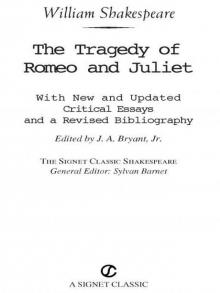 Romeo and Juliet
Romeo and Juliet As You Like It (Folger Shakespeare Library)
As You Like It (Folger Shakespeare Library)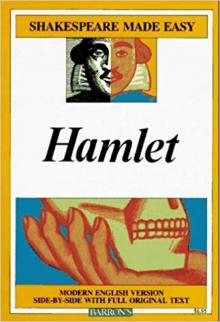 Hamlet
Hamlet Richard II (Folger Shakespeare Library)
Richard II (Folger Shakespeare Library)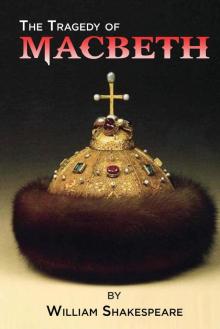 Macbeth
Macbeth Henry V
Henry V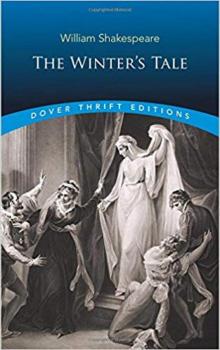 The Winter's Tale
The Winter's Tale The Taming of the Shrew
The Taming of the Shrew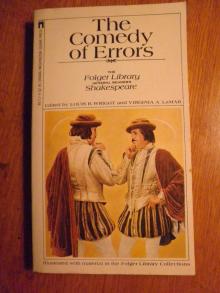 The Comedy of Errors
The Comedy of Errors King Lear (Folger Shakespeare Library)
King Lear (Folger Shakespeare Library)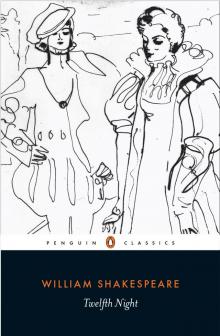 Twelfth Night
Twelfth Night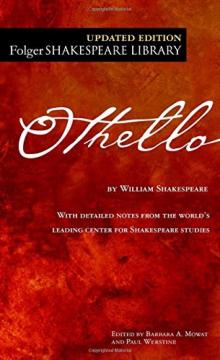 Othello
Othello The Two Gentlemen of Verona
The Two Gentlemen of Verona Henry IV, Part 1 (Folger Shakespeare Library)
Henry IV, Part 1 (Folger Shakespeare Library) King John/Henry VIII (Signet Classics)
King John/Henry VIII (Signet Classics)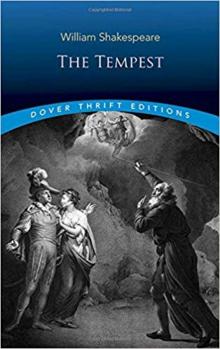 The Tempest
The Tempest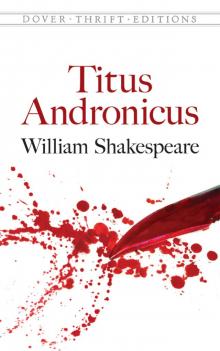 Titus Andronicus (Dover Publications)
Titus Andronicus (Dover Publications)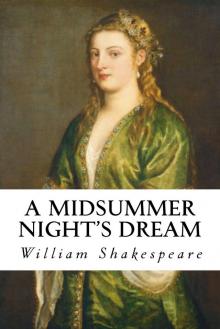 A Midsummer Night's Dream
A Midsummer Night's Dream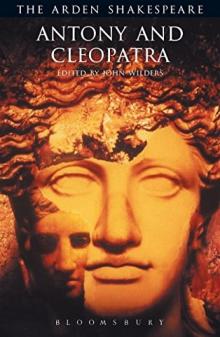 Antony and Cleopatra (Arden Shakespeare: Third Series)
Antony and Cleopatra (Arden Shakespeare: Third Series)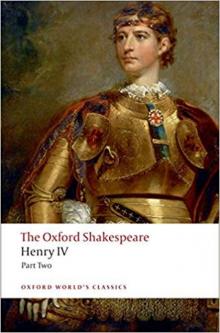 The Oxford Shakespeare: Henry IV, Part 2 (Oxford World's Classics)
The Oxford Shakespeare: Henry IV, Part 2 (Oxford World's Classics)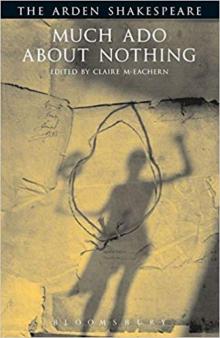 Much Ado About Nothing (Arden Shakespeare: Third Series)
Much Ado About Nothing (Arden Shakespeare: Third Series) All's Well That Ends Well
All's Well That Ends Well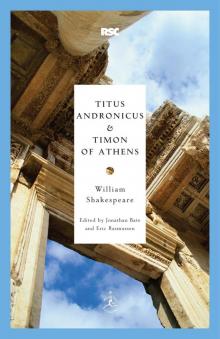 Titus Andronicus & Timon of Athens
Titus Andronicus & Timon of Athens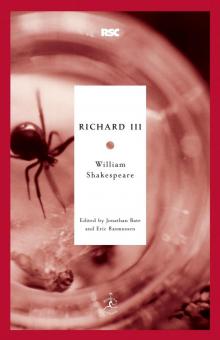 Richard III (Modern Library Classics)
Richard III (Modern Library Classics) Coriolanus
Coriolanus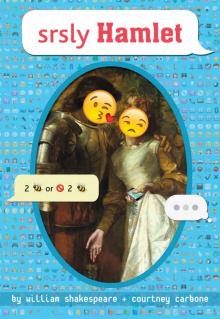 srsly Hamlet (OMG Shakespeare)
srsly Hamlet (OMG Shakespeare) The Merchant of Venice
The Merchant of Venice Richard III
Richard III Richard II
Richard II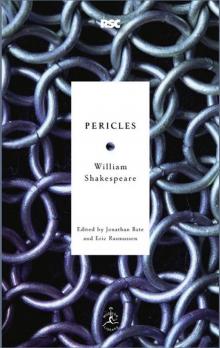 Pericles
Pericles As You Like It
As You Like It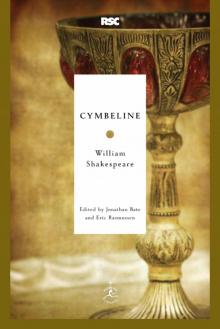 Cymbeline
Cymbeline Alls Wel that ends Well
Alls Wel that ends Well YOLO Juliet
YOLO Juliet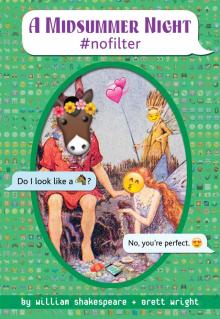 A Midsummer Night #nofilter
A Midsummer Night #nofilter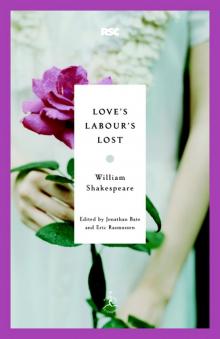 Love's Labour's Lost
Love's Labour's Lost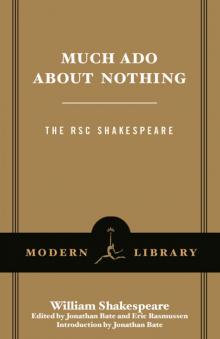 Much Ado About Nothing
Much Ado About Nothing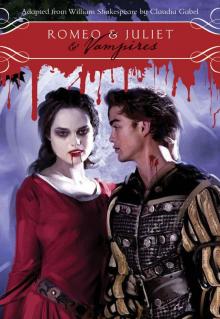 Romeo & Juliet & Vampires
Romeo & Juliet & Vampires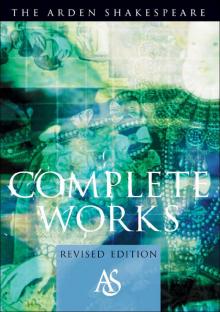 The Arden Shakespeare Complete Works
The Arden Shakespeare Complete Works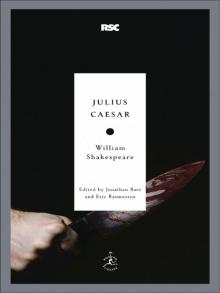 Julius Caesar
Julius Caesar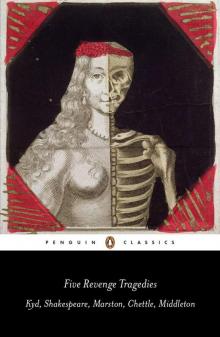 Five Revenge Tragedies: The Spanish Tragedy, Hamlet, Antonio's Revenge, The Tragedy of Hoffman, The Revenger's Tragedy (Penguin Classics)
Five Revenge Tragedies: The Spanish Tragedy, Hamlet, Antonio's Revenge, The Tragedy of Hoffman, The Revenger's Tragedy (Penguin Classics)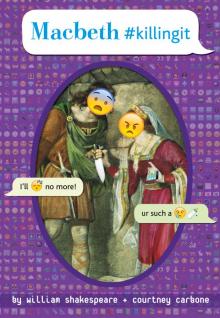 Macbeth #killingit
Macbeth #killingit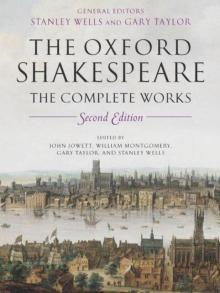 The Oxford Shakespeare: The Complete Works
The Oxford Shakespeare: The Complete Works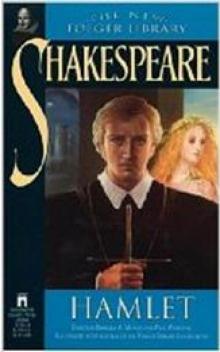 Hamlet, Prince of Denmark (Collins edition)
Hamlet, Prince of Denmark (Collins edition)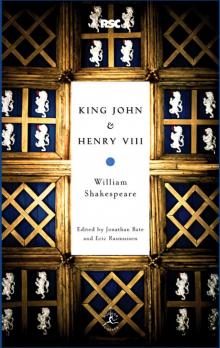 King John & Henry VIII
King John & Henry VIII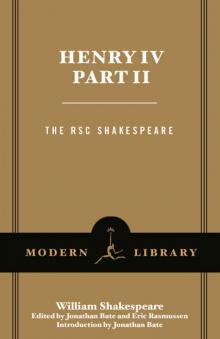 Henry IV, Part 2
Henry IV, Part 2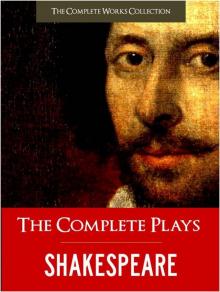 Complete Plays, The
Complete Plays, The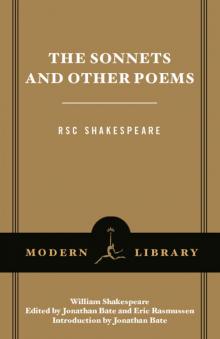 The Sonnets and Other Poems
The Sonnets and Other Poems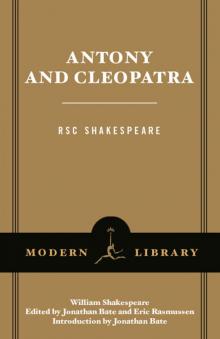 Antony and Cleopatra
Antony and Cleopatra Henry IV, Part 1
Henry IV, Part 1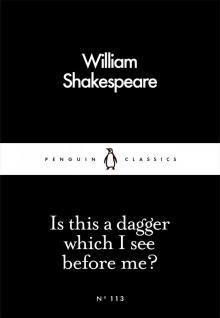 Is This a Dagger Which I See Before Me?
Is This a Dagger Which I See Before Me? The Complete Works of William Shakespeare In Plain and Simple English (Translated)
The Complete Works of William Shakespeare In Plain and Simple English (Translated) The Sonnets
The Sonnets